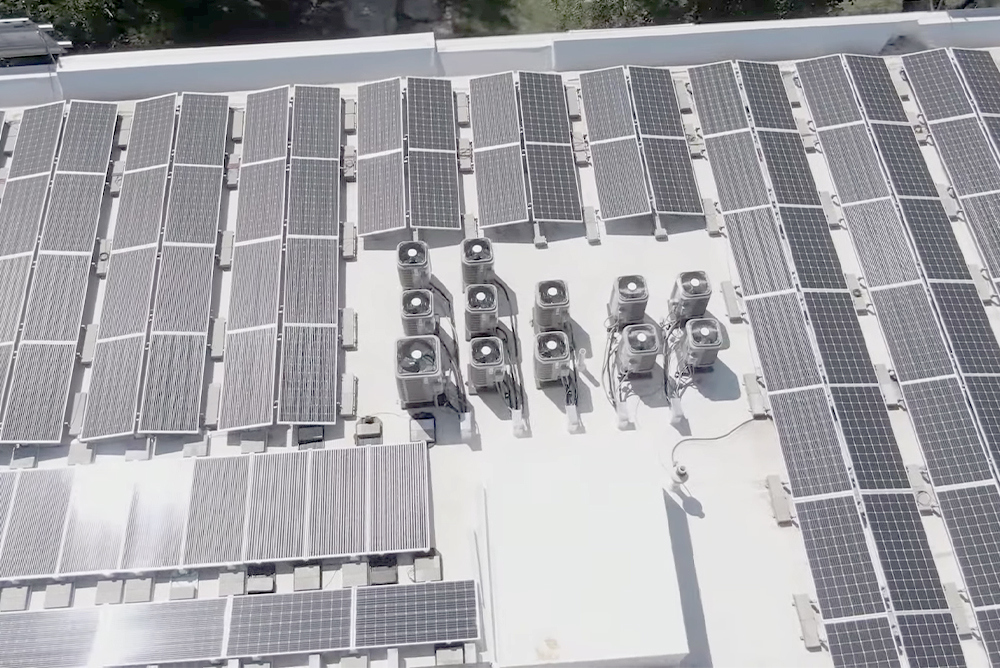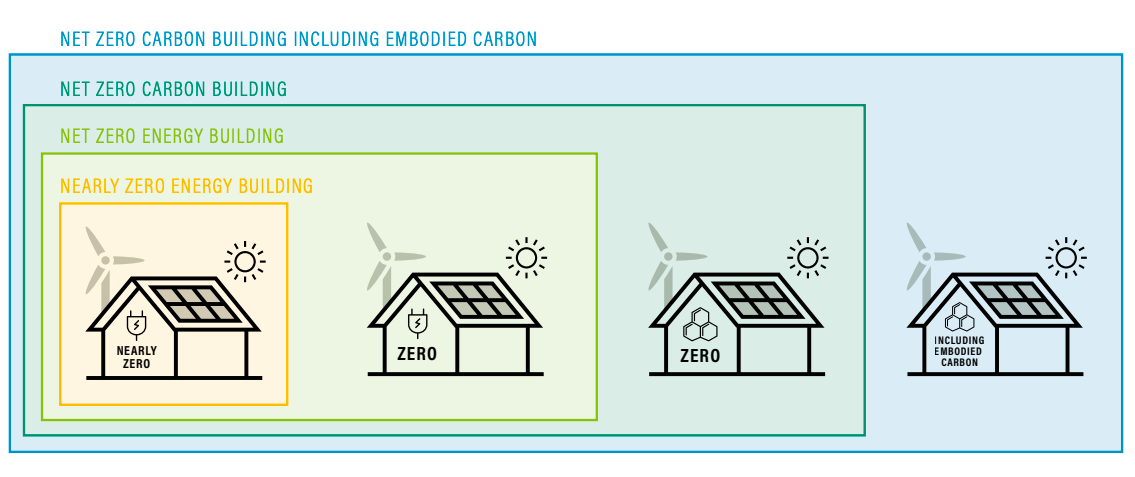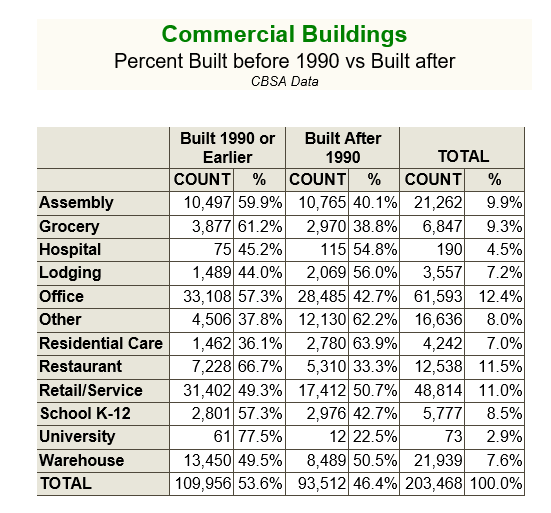Breaking down the path to net zero energy: Existing buildings

Net zero energy buildings are a trend that’s here to stay. The number of buildings in the U.S. that meet the zero net energy standard — producing as much energy as they consume — has grown from just 60 in 2012 to nearly 600 in 2019. That growth has stimulated interest among building managers eager to stand out with potential tenants and also save on energy costs.
Of the many detailed resources that have cropped up in recent years to guide them along the path to zero, BetterBricks is here to offer help at the outset: understanding why it pays to invest in net zero and how to start planning today. Read on for our guide to creating a net zero energy plan for existing buildings.
NET ZERO ENERGY 101
There are a lot of definitions of net zero energy out there — far too many to list here. The simplest way to think about it is that a net zero energy building produces at least as much energy as it consumes on an annual basis. Therefore, it’s total (net) energy use is zero. Typically, that energy comes from on-site or nearby renewable sources.
But, there are a range of different “net” designations in use. So it’s important to keep in mind that net zero energy is separate from related terms like, nearly zero energy, net zero carbon and net zero carbon including embodied carbon. Each type of building has distinct features that warrant their own explanation. The diagram below outlines the relationship between them, but for now we will focus just on net zero energy.

WHY UPGRADE?
Many factors entice building managers and owners to pursue a net zero energy strategy. The most commonly known ones have to do with controlling costs. Achieving zero net energy use means not only reducing energy use by up to 60 percent right now but also insulating a building against future spikes in energy prices.
The lesser-known benefits can be equally as powerful. Don’t forget that the physical work environment can be as much of a magnet for talent as a benefits package or generous vacation policy. Components of net zero energy buildings — like smart lighting and temperature controls — also make for more comfortable spaces that occupants actually enjoy spending time in. Plus, the net zero energy designation on its own can be a source of pride for many organizations and a way to help a property stand out from others.
DON’T MISS AN OPPORTUNITY
The path to zero for a new building is often more straightforward and condensed within the design and construction periods. For buildings that already exist, the process is usually much longer. But, this isn’t a bad thing. It means building managers have the luxury of spreading the costs and decision-making out over a longer period of time.
The key to being successful is recognizing opportunities to make incremental steps and planning for them. These opportunities cluster around two periods: changes in ownership and regular maintenance.
New Tenant or Owner
The point of sale to a new owner or point of lease to a new tenant are instances when building managers have more freedom to make upgrades. Which upgrades they choose depends greatly on the building, but reducing consumption and improving efficiency are always good starting points. Installing smart lighting, smart pumps, better insulation, more efficient HVAC systems, building automation systems, and building envelope improvements (i.e. high-efficiency windows) are just a few examples of efficiency improvements. A change in ownership could also be an opportunity to install solar panels or work on other ways of generating renewable energy on site.
Maintenance and Updates
If the owner or tenant is going to remain for some time, regular maintenance and safety upgrades are equally good opportunities to make the same kinds of efficiency upgrades. You can make the choice to replace old pumps with smart pumps that use 50 percent less energy. Or, tackle outdated windows (often a leading cause of energy waste and tenant discomfort) by replacing them with high-efficiency windows.
Anytime you’re touching building systems is potentially an opportunity to make incremental upgrades for efficiency that cost-effectively meet market fundamentals of payback and return on investment. To make the most out of your efforts, try bundling upgrades together. For example, if you need to replace a boiler, why not also install more efficient water fixtures at the same time? Considering how each component is part of a bigger system and combining multiple upgrades helps maximize each opportunity.
GETTING HELP
Utility providers understand the benefits of becoming a net zero energy building, so many are ready to offer different incentives to help you. Increasingly, they’re moving away from simply offering one-time incentives for purchasing products towards regularly incentivizing you to reduce your energy use over time as well. To find out what incentives are available in your region, head to our utility program page and enter your zip code.
You can also watch Andrew Lee from the International Living Future Institute talk about the path to zero on our YouTube channel.

